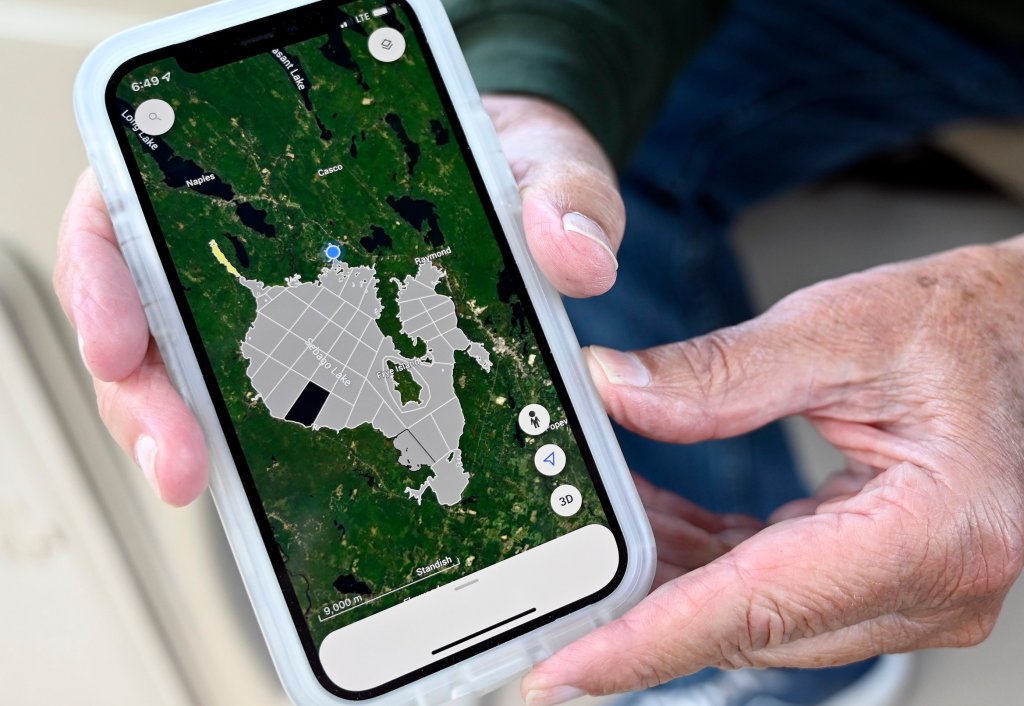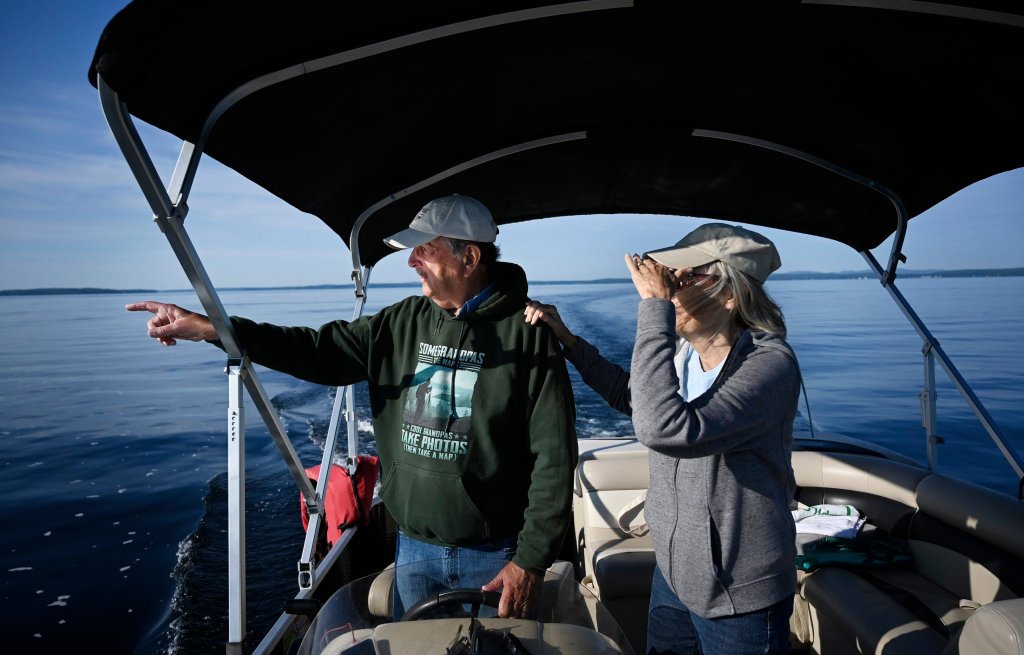Volunteers set out on lakes and ponds across Maine early Saturday morning to take a snapshot of the status of a bird that is near and dear to Maine’s heart.
The Maine Audubon Loon Count has tallied the bird’s population each year since 1983 with the help of more than 1,600 nature enthusiasts. Volunteers take to the water in boats and on paddleboards, spending just 30 minutes in each assigned area, and then report the numbers back to regional coordinators. Each sighting is catalogued to provide a bigger picture of the state’s loon population.
Though the final results for this year won’t be released for several weeks, last year’s count estimated 2,892 adult common loons and 411 chicks living south of the 45th parallel, a line that runs from Rangeley to Calais.
Though 2022 and 2023 saw decreases in adult loon numbers, estimates have trended upward since the ’80s. Based on the 2023 count, organizers estimated that there were 113 more chicks that year than in 2022.
Volunteer Brad McCurtain coordinated the count on Sebago Lake, a massive undertaking that included 70 volunteers across more than 30,000 acres. McCurtain helped start the Sebago count in 2022 after noticing previous loon counts didn’t include Sebago.
For McCurtain, a longtime resident of the Sebago region, it’s all part of an effort to build a base of reliable data documenting the bird’s presence on the second-largest lake in Maine.
“The overwhelming majority of counters are people who volunteer for this that I’ve never met, and there’s a great amount of trust that I have to put in people that if they say they’re going to be there, they will be there,” he said.
Third-time loon counters Bruce and Gail Small, of Raymond, were among the volunteers out on Sebago on Saturday morning. They have lived along the lake for almost 30 years and enjoy watching and photographing its natural inhabitants. The couple first volunteered for the count at Little Sebago Lake in 2021 and started helping out on “big” Sebago in 2022.
The Smalls spotted two loons in their assigned area from their boat – a number they said was less than they expected, but it made for a good experience nonetheless.
“It’s rewarding to be a part of a group and volunteer for things,” Bruce Small said. “We enjoy being on the lake, because we’re out there quite a bit, and I know the area quite well that we had.”
Maine has more common loons than any other state in the Eastern U.S., with a population that has doubled over the past four decades. The waterbird is vulnerable to human activity like fishing and shoreline development and is listed as endangered in several other states.
Send questions/comments to the editors.









We invite you to add your comments, and we encourage a thoughtful, open and lively exchange of ideas and information on this website. By joining the conversation, you are agreeing to our commenting policy and terms of use. You can also read our FAQs. You can modify your screen name here.
Readers may now see a Top Comments tab, which is an experimental software feature to detect and highlight comments that demonstrate compassion, reasoning, personal stories and curiosity, and encourage and promote civil discourse.
Join the Conversation
Please sign into your Sun Journal account to participate in conversations below. If you do not have an account, you can register or subscribe. Questions? Please see our FAQs.